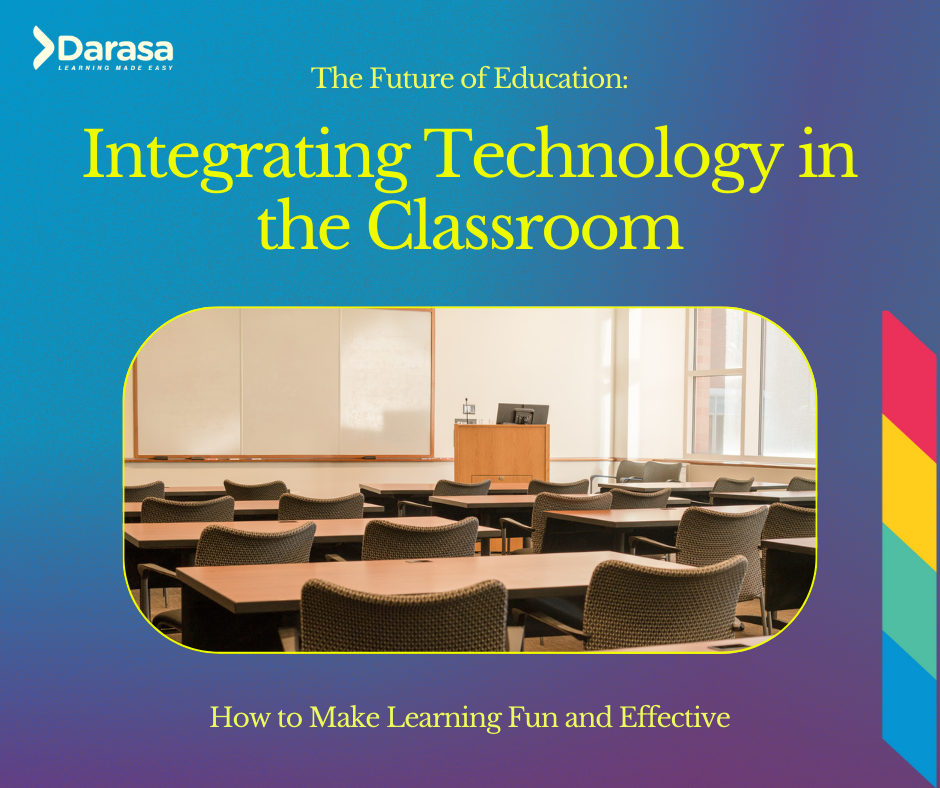
Technology in the Classroom:
How to Make Learning Fun and Effective
Technology is everywhere these days, and it has become an essential part of our lives. We use it to communicate, work, play, and learn. But how can we use technology in the classroom to enhance the learning experience for our students? In this blog post, I will share some benefits and tips on how to integrate technology in the classroom and some examples of technology tools that you can use with your students.
Benefits of Technology in the Classroom
Technology can offer many benefits for both teachers and students in the classroom, such as:
- Increased engagement: Technology can make learning more interactive, fun, and relevant for students. For example, using games, videos, simulations, and virtual reality can capture students’ attention and motivate them to learn more.
- Improved collaboration: Technology can facilitate collaboration among students and teachers, both inside and outside the classroom. For example, using cloud-based tools, online platforms, and social media can enable students to work together, share ideas, and give feedback to each other.
- Enhanced differentiation: Technology can help teachers to differentiate instruction and meet the diverse needs of students. For example, using adaptive software, personalized learning paths, and multimedia resources can provide students with different levels of challenge, support, and feedback.
- Expanded access: Technology can expand the access to information, resources, and opportunities for students and teachers. For example, using the internet, online courses, and digital libraries can expose students to a variety of topics, perspectives, and cultures.
- Increased creativity: Technology can foster creativity and innovation among students and teachers. For example, using digital tools, such as 3D printers, pen displays, and video editors, can enable students to create and express themselves in new ways.
Tips for Integrating Technology in the Classroom
Integrating technology in the classroom can be challenging, especially if you are not familiar with the technology or have limited resources. Here are some tips to help you integrate technology in the classroom effectively:
- Start small: You don’t have to use every technology tool available or transform your entire curriculum overnight. Start with one or two tools that you are comfortable with and that align with your learning objectives and students’ needs. Experiment and learn from your experience and feedback.
- Plan ahead: Before using technology in the classroom, make sure you have a clear purpose and plan for how to use it. Consider the following questions:
- What are the learning goals and outcomes?
- How will technology support and enhance the learning process?
- How will you assess the learning?
- How will you manage the technology and the classroom environment?
- Choose wisely: There are many technology tools out there, but not all of them are suitable or effective for your classroom. Choose the tools that are relevant, reliable, user-friendly, and affordable. Also, check the compatibility, security, and privacy of the tools before using them.
- Involve students: One of the best ways to integrate technology in the classroom is to involve your students in the process. Ask them for their opinions, preferences, and suggestions on what technology tools they want to use and how they want to use them. Let them explore, experiment, and discover the technology on their own. Encourage them to share their work, feedback, and learning with others.
- Seek support: You don’t have to integrate technology in the classroom alone. Seek support from your colleagues, administrators, parents, and experts. You can also join online communities, networks, and forums where you can find resources, ideas, and advice from other teachers who are using technology in the classroom.
Examples of Technology Tools for the Classroom
There are many technology tools that you can use in the classroom, depending on your subject, grade level, and learning objectives. Here are some examples of technology tools that you can try with your students:
- Interactive whiteboards: These are large touch-screen devices that can display images, videos, and presentations from a computer or a tablet. You can use them to introduce a topic, demonstrate a concept, or review a lesson. You can also use them to interact with your students, such as asking questions, drawing diagrams, or playing games.
- Tablets: These are portable devices that can run various apps, games, and programs. You can use them to provide individualized instruction, practice, and feedback for your students. You can also use them to access online resources, such as ebooks, videos, and podcasts. You can also use them to create and share digital content, such as photos, videos, and podcasts.
- Online learning platforms: These are web-based platforms that can host and deliver online courses, lessons, and activities. You can use them to create and manage your own online courses, or enroll your students in existing courses. You can also use them to communicate and collaborate with your students, such as posting announcements, assignments, quizzes, and discussions.
- Virtual reality: This is a technology that can create and simulate realistic and immersive environments. You can use it to provide your students with experiential and hands-on learning, such as exploring historical sites, natural phenomena, or fictional worlds. You can also use it to enhance your students’ empathy, creativity, and problem-solving skills.
- 3D printers: These are devices that can print physical objects from digital models. You can use them to provide your students with tangible and concrete learning, such as creating models, prototypes, or artifacts. You can also use them to inspire your students’ curiosity, imagination, and innovation.
Technology in the classroom can be a powerful and exciting way to make learning fun and effective for your students. By following the tips and examples above, you can integrate technology in the classroom successfully and enjoy the benefits it can offer. Happy teaching!
